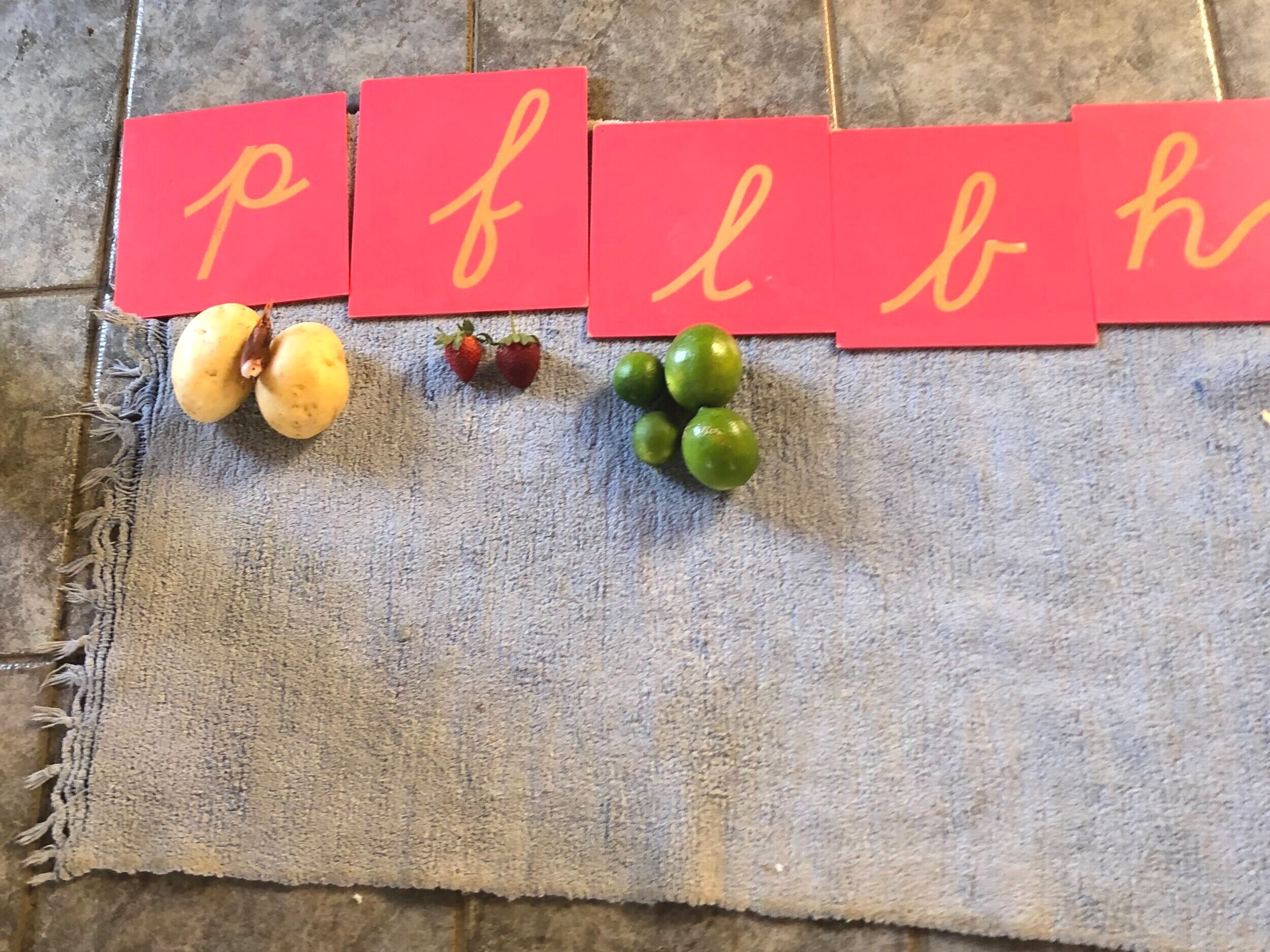Montessori Language in the 3-6 Environment
Language development is a vast and dynamic process. During the first six years of life, children are in a sensitive period for language development, rapidly absorbing and expressing newfound information and abilities.
Many language skills are practiced simultaneously as a child grows and develops. Montessori 3-6 environments are designed to provide rich language experiences for these young learners with materials and activities that span the curriculum.
Dr. Montessori’s original classroom used three materials as the main focus for the development of reading and writing. While language skills are practiced in many forms, these three materials are still the foundation of Montessori language:
Sandpaper Letters
These letters provide a tactile learning of letter sounds and associated symbol as the child traces the letter and makes the letter sound. This is the foundation for the development of reading and writing.
Metal Insets
The metal insets are designed to prepare the muscles of the hand for writing. As a child traces and colors the insets they are developing their pincer grasp and practicing fluid hand movements.
Movable Alphabet
These cut out letters provide a means for the child to creatively express themself without the physical limitations that handwriting may present. The child is able to communicate ideas and begins to learn rules of language.
With these materials in mind, let’s take a look at how we generally categorize language development for 3-6 year olds.
Spoken Language
In the Montessori environment, children have the freedom to explore the dynamics of spoken language. Activities and games such as matching objects and pictures, “I Spy,” songs, storytelling, and read-alouds develop receptive and expressive language skills.
The adults in the environment, as well as the older children, serve as a model for the appropriate use of language and a source of new vocabulary. Nomenclature work is fascinating for children and provides new vocabulary for describing the world around them.
Sounds & Symbols
Children spend a lot of time identifying the sounds of language before their symbols, or letters, are introduced. They practice listening to isolate individual sounds, then gradually pair this understanding with corresponding letters. Here is where the sandpaper letters come in.
Practice with the sounds and symbols of language happens through a variety of sound games, rhymes, matching activities, direct lessons, dictating stories, just to name a few.
When a child has a firm grasp of several letters, we move into writing with the movable alphabet. That’s right - we don’t go into reading from here. Expressive language skills are at the forefront as it is easier to work from what we know (expressing our thoughts, ideas, feelings) than head into the unknown of reading (receptive skills, decoding, etc).
Writing
Much indirect preparation goes into the development of writing, in both the physical preparation of the hand (motoric or mechanical development) and understanding the representation of symbols and sounds and how they are used for expression.
As mentioned above, the expressive side of writing emerges with the use of the movable alphabet. The child uses knowledge of symbol and sound to communicate ideas, constructing words, phrases, sentences and stories.
The development of the muscles of the hand began with a child’s work in the Practical Life and Sensorial areas of the classroom. The metal insets and pin punching are some of the most well-loved activities in 3-6 environments, both of which are excellent preparation for writing. Children move from tracing the sandpaper letters to writing letters in a sand tray, then on chalkboards, to eventually writing letters on paper.
I go into detail about supporting writing development in this blog post.
Reading
Montessori discusses the concept of “Total Reading,” which goes beyond the basic idea of decoding words into reading comprehension and the relationship of words. The exercises with the movable alphabet lead to phonetic reading, which later evolves into the exploration of phonograms and digraphs.
Once the child begins to read, nomenclature work helps him to build his vocabulary and can be extended into other areas of the classroom, such as science or geography. Grammar lessons aid in the development of both reading and writing skills.
You may have noticed that many materials and activities have more than one purpose, as they appear and reappear in different categories of language development, and permeate all areas of the Montessori environment. Preparation for language skills appear in Practical Life and Sensorial areas, while extensions of skills appear in Math, Science, and Geography. Language development is everywhere.









